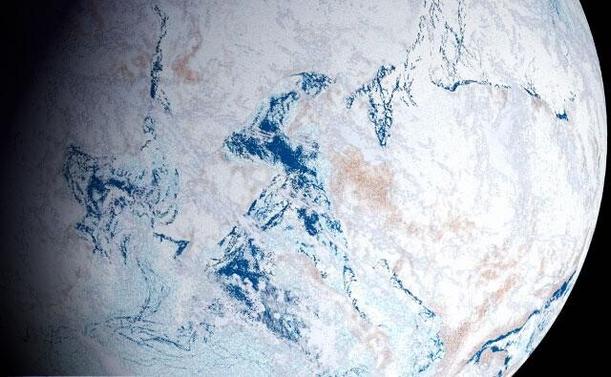Wilson Cycle Phase 4 - Episode 4 - Collision and Collapse
“Tuzo was indeed an amazing man. His scientific interests were in the building of mountain ranges and moving of continents, and he certainly had a huge and long-lasting effect on Earth Science. But even more, his talent was in moving another type of mountain: those ideas in men’s and women’s minds that lock us into past patterns of behaviour and prevent visualization of new possibilities.”
~ Gordon F. West and others, from “John Tuzo Wilson: a man who moved mountains.”
‘The final stage of the Wilson Cycle involves continental-continental collision and the formation of giant mountain belts. And yet it’s how these giant mountain belts get exposed at the surface that allows us to study the Wilson Cycle in its entirety. Now we are going to explore the rocks which are formed deep within the mountain building stages of the Wilson Cycle and discover how these rocks are exposed at the surface today.
~ Professor Dougal Jerrom - intro to Episode 4
In the video below, “Wilson Cycle Phase 4 -Episode 4 -Collision and Collapse”, we finish our trip with Professor Dougal Jerrom, and the team of researchers in search of evidence for the collision and collapse of the Caledonian orogeny in the Caledonides Mountains. This series has kept the last and best for the finale, and it is a mind-blowing conclusion. I really recommend you watch the 29 minute video for yourself. It is well worth your time!
We first stop to look at some eclogites, and Norway has the best in the world - “the jewel in the crown of Norway” and are under its protection. These are ultra-high pressure metamorphic rocks that have been formed 100 km. or more deep in the subduction zone, and are especially stunning with coarse-grained “pegmatic” texture, deep green orthopyroxene, bright red garnet, and a white mineral coesite, a metamorphic index mineral indicates they underwent extremely high pressure. As Professor Jerrom says, discovering how these rocks were exposed is one of the most fascinating geology stories yet.
This starts with the subduction of oceanic crust underneath oceanic crust. The subducted slab is being pulled down by its own weight, and the two continents are approaching each other. The upper portion of the slab is still buoyant (see the model below, and the model in the video they run in the CEED lab) and doesn’t want to go down, so the slab breaks off and sinks through the mantle. The upper slab springs back up in a process called “eduction” (the reverse of subduction) and brings the deep metamorphic rocks back up where they are exposed during the collapse portion of the Wilson Cycle.
The late stages of subduction and collision build mountains as high as 3 km., but they are gravitationally unstable. The crust is thickened and getting heavier, and the upper level goes back into extension even as the lower crust is still thickening because of its own weight. This happens EVEN AS MOUNTAIN BUILDING IS STILL OCCURRING. Lots of erosion fills the basin with thick sediments up to 25 km. We see a giant detachment fault that is slowly denuding the top of the mountain of sedimentary rock that is sliding down a fault plane of metamorphosed rock. So mountains can quickly (in geological time) be stripped and the deeper crustal rocks exposed by isostatic rebound. We see this happening to day in the Himalayas Tibetan Plateau.
We are taken up close to a “textbook” active detachment fault with gouge, grain-size reduction, and fluid circulation. By studying the magnetism of the fractures of the fault and comparing it with the magnetism in this part of the world, tells us that the fault was reactivated, and also tells us about the end of the Caledonian, and the beginning of a new Wilson Cycle!
“So we’ve seen all the gems of knowledge stored in the rocks of Norway from the mountains to the fields tell us about this major cycle in Earth’s history, but it doesn’t end here because it’s happening again today with the north Atlantic opening and Norway is the place we could come back to in millions and millions of years in the future to understand the closure of that ocean and the mountain building event that would form the next Wilson Cycle.’
~ Professor Jerrom Dougal closes the series.
Wilson Cycle Phase 4 - Episode 4 - Collision and Collapse: https://youtu.be/pFuW4MtXhIM
The video introduces a paper published in the 90s that outlines the process of subduction and eduction, by Torgeir B. Anderson (yes, the same Torgeir that has been providing all the information on our journey) et al. Highly informative https://www.researchgate.net/publication/229872945_Subduction_and_eduction_of_continental_crust_major_mechanisms_during_continent-continent_collision_and_orogenic_extensional_collapse_a_model_based_on_the_south_Norwegian_Caledonides
#JohnTuzoWilson #LegendsOfGeology #TheWilsonCycle #Caledonides #Norway #WatchTheDamnVideo #PlateTectonics #SubductionAndEduction #OrogenicCollapse #eclogites #geology #Science #NorwegianGeologyRocks @geology

